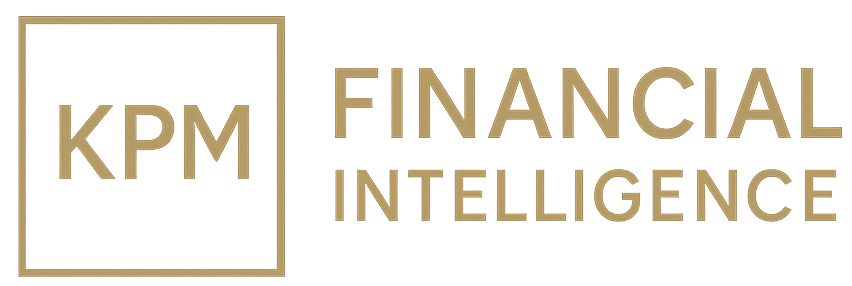Mozambique’s Quiet Capital-Market Revolution Gains Global Notice
Mozambique (BVM: MZSE) is reforming fast. Market cap ≈ USD 2B (<10 % of GDP), 5Y T-Bond (MZGB05Y) yields 17 %, Eurobond 2031 (ISIN XS2051363195) at 11.4 %. With IMF (ECF) support and AELP links, the frontier market is turning reform into investable depth.

Mozambique’s capital markets are moving from symbolic to strategic. Once an afterthought in national development planning, the Bolsa de Valores de Moçambique (BVM: MZSE) is beginning to emerge as a credible platform for domestic savings, corporate finance, and long-term infrastructure funding. Market capitalization still stands below 10 percent of GDP—around MZN 130 billion (≈ USD 1.9 billion), with only about USD 1.3 billion in free float—but a wave of structural reforms and regional linkages is giving investors reason to take notice.
At the macro level, Maputo is under pressure to diversify funding. Public debt reached approximately USD 18.7 billion, around 95 percent of GDP in 2024, leaving limited room for new sovereign borrowing. The 2025 Domestic Debt Strategy sets out a clear pivot: extend maturities, deepen the bond market, and encourage private-sector listings. Equity turnover remains modest at around MZN 250 million (USD 4 million) annually, but authorities see it as a base to build from rather than a ceiling. For perspective, Kenya’s Nairobi Securities Exchange (NSE: NASI) trades volumes roughly 30 times higher relative to GDP, and South Africa’s Johannesburg Stock Exchange (JSE: J203) clears nearly USD 1 billion daily. Mozambique’s gap is therefore also its potential—a market so small that even incremental reform yields exponential visibility.
Local banks are beginning to adapt. Absa Bank Mozambique, Banco BIG, and Millennium BIM (BVM: BIM) have expanded brokerage and advisory desks to underwrite sovereign and corporate issues. Mozambique’s 5-year Treasury Bond (MZGB05Y: GOVT.MZ) currently yields around 16.5–17 percent, offering one of the region’s highest real returns given inflation of roughly 5.6 percent. Those spreads are attracting regional pension funds seeking diversification from crowded East African paper.
The Capital Markets Authority (CMVM) has introduced IFRS-based disclosure rules, and settlement cycles have moved toward T+3, even if execution occasionally slips to T+4 or T+5. Transparency is improving, and a pipeline of sovereign and municipal issuers is expected to follow. Still, retail participation remains limited—under 20,000 registered investors nationwide—and liquidity risk remains the BVM’s defining constraint.
Integration across borders may prove the game-changer. Through the African Exchanges Linkage Project (AELP), Mozambique is connecting its systems to Johannesburg (JSE: J203), Gaborone (BSEL: BSE), Accra (GSE: GGSECI), and Lagos (NGX: NGXASI). Once fully operational, the AELP will allow cross-border trading via member brokers, effectively expanding Mozambique’s liquidity pool without requiring immediate domestic listings. For regional investors chasing high-yield frontier paper, this connectivity adds credibility and exit options, something that has been missing from smaller African exchanges.
The next structural frontier is green finance. Mozambique’s draft Green-Bond Framework, developed under the UN Sustainable Stock Exchanges Initiative (UN SSE), could enable issuers in energy and infrastructure to raise ESG-linked funding at concessional spreads. If executed well, the country could mirror Nigeria’s (NGX: NGXGREEN) and South Africa’s (JSE: SAREIT) experience, where green issues tightened yields by 50–70 basis points relative to vanilla bonds. Given Mozambique’s hydro and LNG resources—TotalEnergies (EPA:TTE) and Eni (BIT:ENI) anchor production—the ESG pivot aligns domestic funding with global capital flows shifting toward sustainable assets.
The metical (USD/MZN: MZN=) has been remarkably stable since 2023, supported by LNG inflows and IMF oversight under the USD 456 million Extended Credit Facility (ECF). GDP grew 5.1 percent in 2024 and is projected around 5.3 percent in 2025, ahead of regional peers such as South Africa (0.9 percent), Zambia (3.5 percent), and Kenya (5.0 percent). Mozambique’s 2031 Eurobond (ISIN XS2051363195) yields about 11 percent, roughly 250 basis points above the J.P. Morgan EM Bond Index (NYSEARCA: EMB), reflecting thin secondary liquidity rather than solvency concerns. The reform agenda aims to close that gap by building a credible domestic investor base.
For institutional investors tracking frontier indices, Mozambique offers a rare combination of reform momentum and yield premium. The central bank, Banco de Moçambique (MZPR: CBMZ), maintains its policy rate at 15.75 percent, sustaining positive real returns even as U.S. Treasury yields (US10Y: ^TNX) hover around 4.35 percent and the Dollar Index (DXY: DX-Y.NYB) remains above 105. When U.S. rates begin to ease and global liquidity returns, Mozambique’s high-carry, low-correlation assets could become a magnet for yield-seeking capital.
Regionally, Mozambique’s trajectory resembles Botswana’s gradual market deepening (BSEL: GOVBOTS) and Ghana’s (GSE: GGSECI) debt-market reform. If the BVM can triple market capitalization to roughly USD 6 billion and extend maturities beyond ten years within five years, it would join the continent’s mid-tier exchanges alongside Lusaka (LuSE: ALSI). The objective is not to replicate Johannesburg but to establish a Mozambican market that absorbs domestic savings and prices risk locally.
The critical test is execution. Without a steady IPO pipeline and functioning repo and derivatives markets, liquidity could remain superficial. Yet the signals are encouraging: electronic clearing is expanding, regulatory capacity is improving, and integration with regional markets has the backing of the African Development Bank (XBRU: AFDB) and the UN SSE. The momentum suggests that Mozambique is quietly building the architecture for a re-rating when frontier sentiment turns positive.
In a world where many emerging markets struggle to balance high debt with low growth, Maputo’s approach is disciplined and pragmatic. By marrying domestic market building with sustainability finance, Mozambique is positioning itself not as a high-risk outlier but as a frontier laboratory for inclusive capital-market development. The headline numbers may be small, but the signals from Maputo speak to a larger truth: in frontier finance, credibility is a currency of its own.





